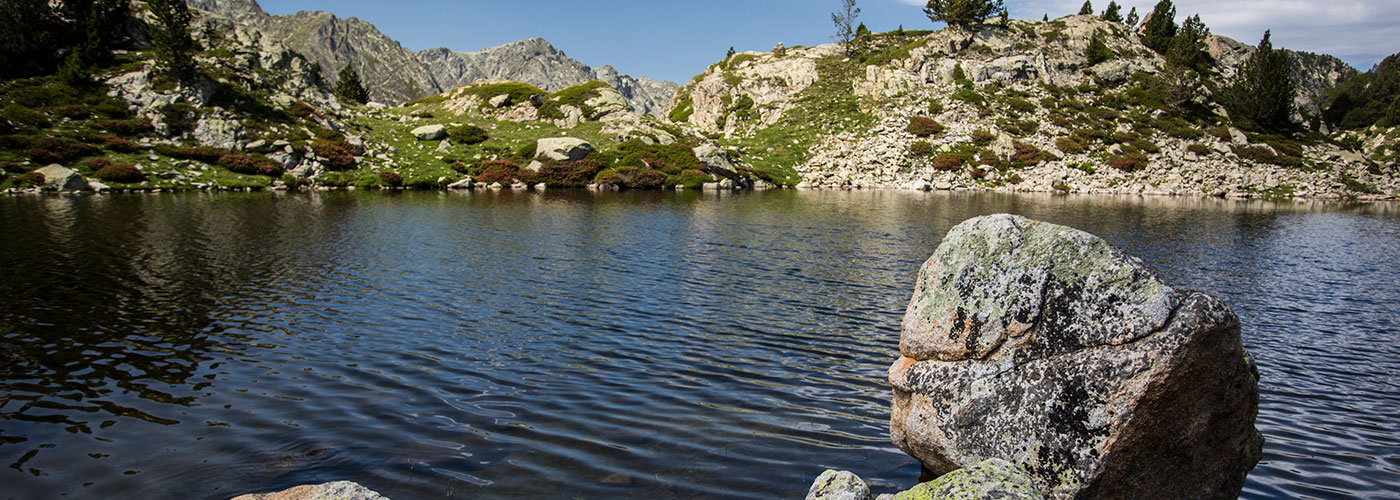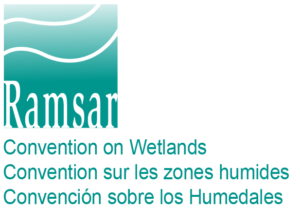
WATER
In this cultural landscape, water represents an intangible asset of enormous importance.
The lakes, rivers, springs and swamps make up a series of landscapes of great beauty and importance. We would particularly mention the approximately 30 lakes of glacial origin that are found in the Valley, and obviously the River Madriu, “mother of the river”, of the waters that give the valley its name, as well as its most significant affluent, the River Perafita, which converge at Entremesaigües The River Madriu runs through 11.5 km of the territory with an average slope of 7.6%.
The lake system of the valley, of glacial origin, is very important, such as the Gargantillar-Els Estanys or the Estany de la Nou, highlighting two of the largest lakes in the country, L’Illa and Montmalús (in the buffer zone), both of which are in the parish of Encamp. Its calm and cold waters, poor in nutrients, allow to endure plant species adapted to this hard environment .
Numerous springs and streams appear as a result of melting of accumulated snow in winter. Stable in temperature throughout the year (between 6º and 8ºC), they allow a stable environment for the growth of plant varieties on the river banks.
Historically, water has been associated to uses and activities such as forges, watermills, watering, hydroelectric production or drinking water. All these uses and activities have generated structures, which are considered to be cultural ones today, some of which had disappeared and others of which still operate or are still standing.
The water collected in the River Madriu permits the production of 15% of all the electrical energy generated in the country, and its water guarantees the supply of drinking water to 20% of the national population.
In this cultural landscape, water represents an intangible asset of enormous importance.
WETLANDS
The wetlands in Andorra (wetlands, ponds, rafts and lakes) are flooded areas of water permanently or temporarily. These special conditions mean that there is a highly specific fauna and flora with great heritage value. Their rarity and fragility, combined with the small area they cover, make them even more valuable.
These mosaics of ecosystem are highly dynamic and provide multiple benefits for human beings:
– they constitute important reserves of water and regulate its quality
– they participate in the hydrological drainage of the mountain sides
– they participate in regulating the local climate
– they are archives of the history of the land, as in the peat there are plants remains as well as archaeological remains that are preserved intact
– they provide landscapes of great natural, aesthetic and cultural value.
The swamps in the valley are in a good state of preservation thanks to the reduced anthropogenic influence and offer a good representation of the characteristic biodiversity of Pyrenean wetlands with acid water and they sustain threatened species of flora and fauna, as well as habitats of cultural and ecological interest.
The importance of these wetlands at a worldwide level favoured the adhesion of Andorra to the RAMSAR Convention in 2012, including 59 swamps from the Vall de Sorteny Natural Park on the list of internationally important wetlands.
In 2013, the Madriu-Perafita-Claror Valley was the second zone in the country to be designated as an area of international importance for the Ramsar Convention, as there are 350 wetlands in its territory with habitats and species of wildlife and flora of great interest for its conservation (see: https://rsis.ramsar.org/ris/2183)
With this inscription, it is intended to have an international recognition and protection of these natural resources, as this international agreement promotes and defends integrated ecosystem management and favours the search for a balance between man and the environment.
The Ramsar Convention is an intergovernmental treaty that ratifies the commitments taken on by the member countries to maintain the ecological characteristics of wetlands and to plan the rational or sustainable use of all the wetlands in their territories.
For more information, you can consult the following links:


